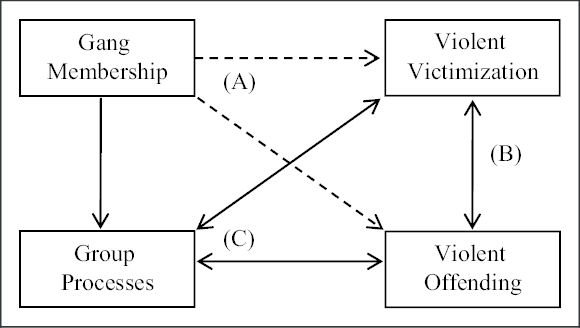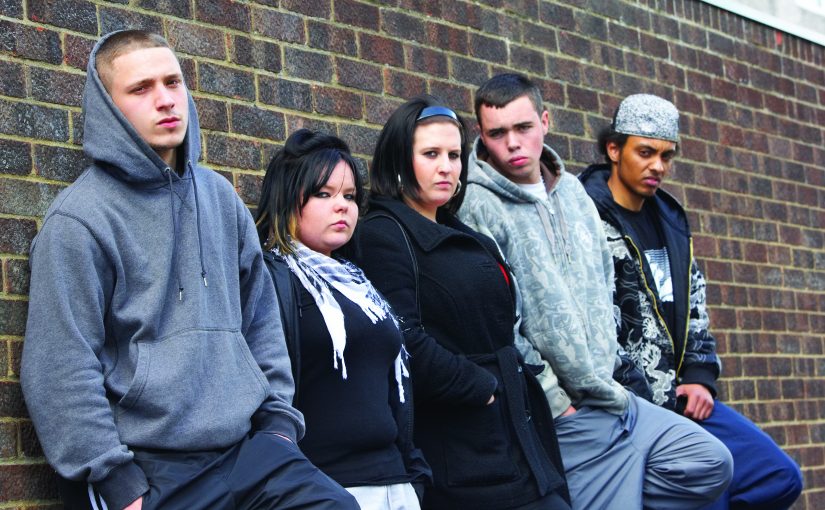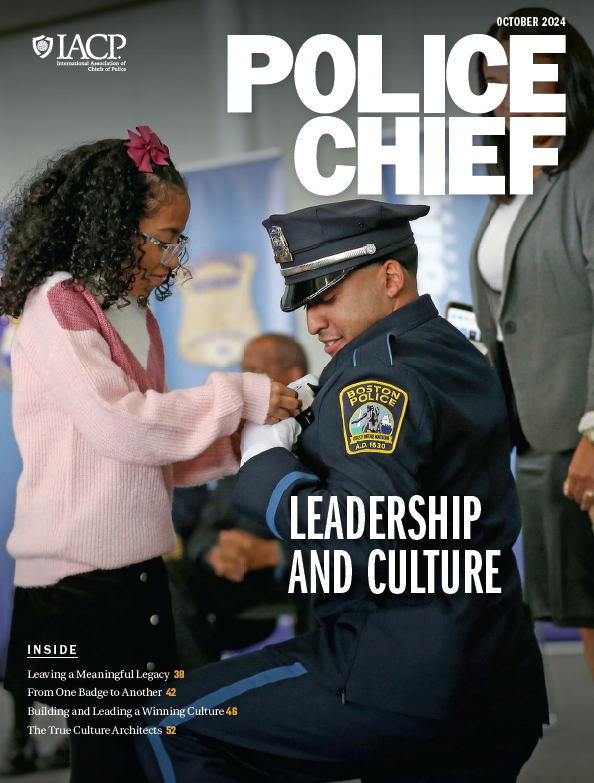In the face of the overwhelming violence both perpetuated by and affecting the young men trapped in the world of gang conflict, it is all too easy to overlook the young women who are also stranded in this unsafe, unstable environment. These women, although they make up less than 10 percent of gang members, face the highest rates of victim-offender overlap and often endure cruel, dehumanizing treatment at the hands of the gang members whom they are attempting to appease.1
Motivation for Joining Gangs
In order to properly address and provide solutions to the issue of female gang membership, it is essential to understand why girls and young women join gangs to begin with. Research shows that, perhaps intuitively, they join gangs for many of the same reasons that young men do. These motivating factors include protection from other gangs or neighborhood violence, a source of income, preexisting social or familial connections to the gang, and a path to earning respect.2 The latter, a desire for respect, is particularly important with the females who enter gangs. Girls who grow up in an environment—where they feel undervalued and powerless—whether that environment is their home, school, or neighborhood—are likely to seek out ways to gain any semblance of authority and respect, which often leads them to gangs.3 In a cruel twist of irony, though, once they are affiliated with a gang, women tend to lose virtually all power.

There are several additional motivating factors for female gang membership, all of which present valuable opportunities for addressing this issue. First, young women are more likely than young men to join a gang because they are seeking a surrogate familial structure. In fact, a lack of parental supervision and monitoring has been shown to be a notable risk factor for female gang membership.4 In a 2016 National Council on Crime & Delinquency (NCCD) study, researchers found that 96 percent of female gang members surveyed had a family member who had been arrested, and 92 percent had a family member in jail or prison.5 In addition, female gang membership has been shown to be correlated with neighborhood disorganization and low school attachment. That is, young women who are joining gangs tend to be coming from communities that lack stability, safety, and commitment, and their education is often marred by these same challenges. In addition, female gang members are likely to have endured childhood physical or sexual abuse.6 And, unfortunately, once they are involved with a gang, these women continue to suffer this type of trauma, making it nearly impossible for them to envision any escape from this vicious cycle.
Women’s Roles in Gangs
It is very difficult to develop an accurate representation of the role that women play once they are actually part of a gang. Admittedly, females do make up a far smaller proportion of gang members, and it is challenging to collect data from a smaller sample size. Nonetheless, there is a striking lack of data collected and published on this specific population. In fact, when surveyed, over 25 percent of U.S. police departments had no data whatsoever on female gang membership.7 However, according to public information officer David Coulson of the Bureau of Alcohol, Tobacco, Firearms and Explosives (ATF) Chicago Field Division, female gang members often play an essential role in the criminal activities of the organization. For many years, ATF has identified the trend of straw purchasing of firearms by women on behalf of their male counterparts in gangs.8 In addition, a 2016 NCCD study found that, of the female gang members they interviewed, 72 percent had been asked, forced, or volunteered to commit a violent act; 66 percent to deal drugs; and 61 percent to hide a gun.9 In this way, female gang members and affiliates are entirely embedded in the gang’s activities, even as they are treated like second-class citizens within the gang and their communities.
Female gang members represent a population that is absolutely underserved and incredibly vulnerable, but also one for which there is great promise for successful interventions. Female gang members experience incredibly high rates of abuse, both at home and within their gangs.10 Psychologists have shown that, in general, females are more likely than males to internalize the stress resulting from trauma such as abuse, which can in many cases lead to self-harming behavior, as well as irreversible damage to self-perception and self-worth.11 Providing services and resources to at-risk females to prevent their initiation into or facilitate their exit from gangs would provide invaluable support for an entire generation of women who face this threat to their psychological and physical development.
On a more optimistic note, female gang members tend to age out of gangs earlier than males. The most common reason for female gang members to abandon their affiliation is pregnancy or parenting. For the women who are involved with gangs, this maternal responsibility often occurs early in life. The NCCD found that, in their sample of female gang members (many whom were under the age of 21), nearly half were pregnant or already a parent.12 The motivation of parenthood means that female gang members are not only likely to leave the gangs earlier, but also more likely to stay uninvolved in the future. Another driving factor for female members leaving their gangs is incarceration. This is important because, overall, female prisoners have statistically lower recidivism rates than their male counterparts.13 This suggests that, once given the proper resources, women are more likely not only to escape gang life, but also to stay clear of it permanently.
Resources and Solutions for At-Risk Women
Unfortunately, there is a disgraceful lack of resources for young women who are at risk for gang involvement. In fact, of the $272 million of U.S. federal funds that are set aside for juvenile justice programs, only $2 million goes toward supporting women.14 There are many rising programs that address young men specifically, with the goal of minimizing the risk factors that contribute to both entry and commitment to gangs. Parallel preventative programs for young women would do well to focus on the risk factors that have been shown to be particularly prevalent for female gang members. For example, since there is a high correlation between female gang membership and lack of parental supervision, programs that provide young women with consistent, reliable mentorship might be helpful in reducing the possibility of future gang membership.15 In addition, therapy and supportive services targeted toward healing survivors’ experiences of sexual, physical, and emotional trauma are sorely needed to serve the women who manage to escape gang life, many who have endured lifetimes of abuse.
There are currently a couple of incredible organizations in Chicago, Illinois, that are focusing on this young female population. Working on Womanhood focuses on young people who face the most significant risk factors for gang affiliation or violence. These girls participate in more than 30 weeks of therapy-based small-group sections designed to address conflict resolution, family issues, addiction, and educational achievement.16 Another organization, Demoiselle 2 Femme, provides services, education, and prevention program to girls ages 13–19. Topics addressed by these programs include HIV/AIDS, obesity, teen pregnancy, substance abuse, violence, money management, and college access.17 Clearly, the capacity to provide for and support these young women does exist. The challenge is ensuring that effective, committed programs such as these become the rule and not the exception.
Conclusion
Female gang members face unimaginable trauma, danger, and hopelessness. And society, in failing to recognize and address these challenges, is abandoning an entire population of women who not only inherently deserve support, but who also have the potential to shape the lives of the men with whom they interact. There is no reason to further endanger and ignore these women—inaction is no longer an option.
Mentorship of young women and community outreach by police departments are vital initiatives in preventing and deterring female gang membership. Such proactive efforts build communities of trust and support for young women that will make a positive impact. What can you do? Get involved, visit schools, start a mentorship program, convene community events revolving around young women. Those efforts will make all the difference.
Notes:
1 National Gang Center, “National Youth Gang Survey Analysis”; R. Anna Hayward and Laura Honegger, “Gender Differences in Juvenile Gang Members: An Exploratory Study,” Journal of Evidence-Based Social Work 11 (August 2014): 373–382.
2 Dana Peterson and Kristin A. Morgan, “Sex Differences and the Overlap in Youths’ Risk Factors for Onset of Violence and Gang Involvement,” Journal of Crime and Justice 37, no. 1 (2014): 129–154; Lisa De La Rue and Dorothy L Espelage“Family and Abuse Characteristics of Gang-Involved, Pressured-to-Join, and Non-Gang-Involved Girls,” Psychology of Violence 4, no. 3 (2014): 253–265.
3 Hayward and Honegger, “Gender Differences in Juvenile Gang Members.”
4 De La Rue and Espelage, “Family and Abuse of Gang-Involved, Pressured-to-Join, and Non-Gang-Involved Girls.”
5 Estivaliz Castro and Caroline Glesmann, Girls and Gangs: Improving Understanding and Responsiveness (National Council on Crime & Delinquency, 2016).
6 De La Rue and Espelage, “Family and Abuse of Gang-Involved, Pressured-to-Join, and Non-Gang-Involved Girls.”
7 National Gang Center, “National Youth Gang Survey Analysis.”
8 David Coulson (ATF, Chicago Field Division), interview by author, July 21, 2017.
9 Castro and Glesmann, Girls and Gangs: Improving Understanding and Responsiveness.
10 Anne Sweeney, “Impact of Chicago’s Violence on Girls in Toughest Neighborhoods Often Overlooked,” Chicago Tribune, December 10, 2016.
11 Hayward and Honegger, “Gender Differences in Juvenile Gang Members.”
12 Castro and Glesmann, Girls and Gangs: Improving Understanding and Responsiveness.
13 Kim Steven Hunt and Robert Dumville, Recidivism Among Federal Offenders: A Comprehensive Overview (Washington, DC: United States Sentencing Commission, 2016).
14 Sweeney, “Impact of Chicago’s Violence on Girls in Toughest Neighborhoods Often Overlooked.”
15 De La Rue and Espelage, “Family and Abuse of Gang-Involved, Pressured-to-Join, and Non-Gang-Involved Girls.”
16 Strides for Peace, “Youth Guidance: Working on Womanhood.”
17 Demoiselle 2 Femme, “About Demoiselle 2 Femme, NFP: Transitioning Girls to Successful Women.”
Please cite as:
Emma Maxwell and Andrew Henning, “Female Gang Membership: Current Treads and Future Directions,” Police Chief Online, December 20, 2017.



